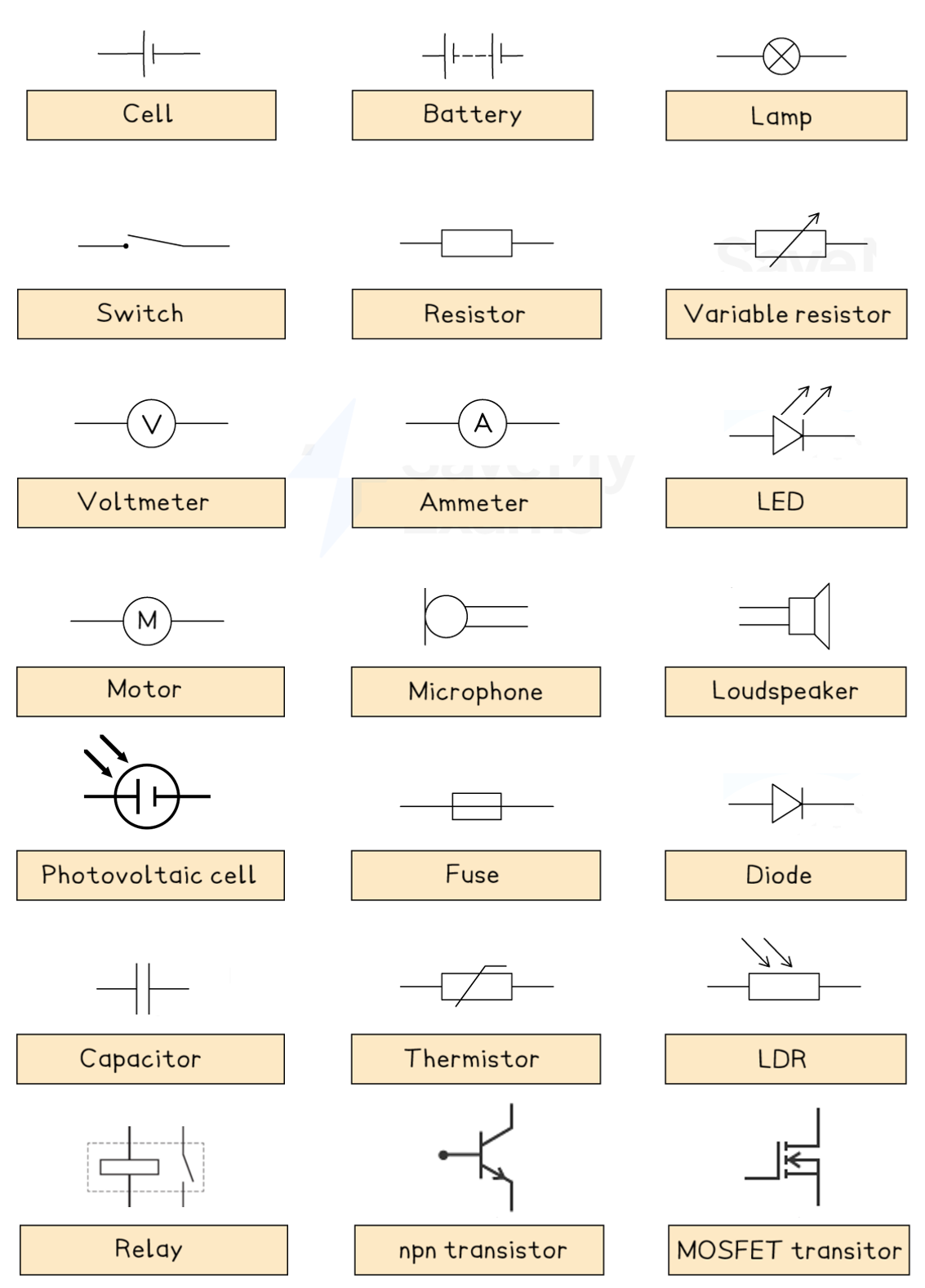Circuit Components (SQA National 5 Physics): Revision Note
Exam code: X857 75
Circuit components
Common electrical and electronic components used in circuits can be represented by standard symbols
Symbols for circuit components

You will be expected to know the symbol, function and application of the following components
Cell / battery
A source of potential difference (voltage) and electrical energy
A battery is two or more cells connected in series
Lamp
Converts electrical energy to light energy
Used as a source of light
Switch
Completes a circuit and allows current to flow when closed
Used to switch circuits on and off
Resistor
Fixed resistors have a constant resistance
Used to control the size of current in a circuit
Voltmeter
Used to measure potential difference (voltage)
Must be connected in parallel
Ammeter
Used to measure current
Must be connected in series
LED
Converts electrical energy to light energy
Only lights up when current flows in the correct direction
Motor
Converts electrical energy to kinetic energy
Used in appliances that move or rotate e.g. washing machine
Microphone
A microphone generates a voltage when sound reaches it
Used in telephones
Loudspeaker
Converts electrical energy to sound energy
Used in headphones
Photovoltaic cell
Produces a voltage when light falls on it
Used to provide energy for satellites and spacecraft
Fuse
Breaks the circuit by melting when the current is too high
Used to protects components from overheating
Diode
Allows current to flow through it in one direction only
Used to convert AC to DC
Capacitor
Stores energy as charge
Used in time delay circuits and electronic amplifiers
Thermistor
Resistance decreases as temperature rises
Used as a sensor in thermostats and heating systems
Light Dependent Resistor, LDR
Resistance decreases as light level rises
Used to control street lights
Relay
An electrically operated switch
Uses a small current in one circuit to switch on a much larger current in another
Transistor
A process device which acts as a switch
Used in electronic switching circuits
Examiner Tips and Tricks
A good way to remember the light dependent resistor is: LDR - Light Decreases Resistance

Unlock more, it's free!
Did this page help you?